The Garbage Odyssey
How Does the County Convert Trash into Recyclables and Compost?
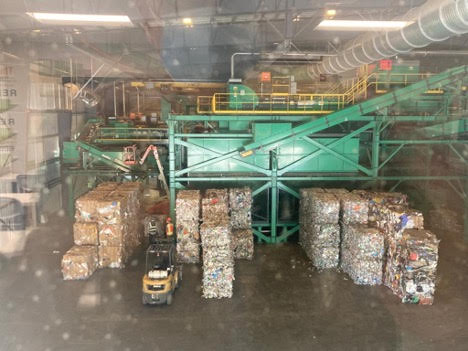
I was disappointed when the volunteer at the Saturday morning Santa Barbara Farmers Market announced that she would no longer be collecting food scraps for composting. How sad for the environment, I thought. Food in a landfill turns to methane, a flammable toxic gas that heats up the atmosphere. Then she surprised me: “It’s good news! The county will now be sorting through all of our trash, separating out food to make compost and energy.”
“What? That must be a gross job,” I blurted.
Smiling widely, she said, “A machine does it!” Sensing I was dubious, she added, “You can actually see it on a tour.”
My husband, our friend Carol, and I soon joined a tour at the Tajiguas Landfill, and, boy, were we shocked by what we learned.

Can a machine discern what is organic?
No, it’s more like everything else is discernible and what’s left happens to be mostly compostable.
How is the trash separated?
Big garbage trucks throw the trash down a shoot. A machine breaks open the bags onto a conveyer belt where it’s sorted for recycling or landfilling.
Metal: On the conveyer belt, magnets separate out the metal, like steel and aluminum. As you’ve probably noticed, aluminum, like a soda can, is not attracted to a fridge magnet. A special eddy current filters out the aluminum, which is the most lucrative of all garbage and sells for a high price to California recyclers. Aluminum can be recycled again and again without losing quality.
Glass: On the conveyer belts, the trash is purposely shaken and gyrated, breaking the glass, which falls through holes in a screen, to be captured for recycling. Glass is made from sand, which is cheap, so it’s not cost effective for bottlers to use recycled glass. The California government has to subsidize it to make it compelling. Recycled glass is used in wine bottles and ground up to make road base for highways. We should be choosing to buy drinks out of a can, instead of a bottle.
Paper / Cardboard: As paper and cardboard are light, fans blow them onto their own conveyer belts. Paper fibers lose quality each time they are recycled. Ultimately it is made into tissue that is usually landfilled.
Plastic: Robots distinguish between different types of plastic on the conveyer belt. Identifying a recyclable one, they send a puff of air to shoot that item down the correct path.
Which plastics are being recycled?
This came as a shock to me. I buy a lot of yogurt and ready-made food which typically comes in containers labeled plastic #5. Those are usually landfilled. Only plastics #1 and #2 are regularly being recycled. That includes water bottles, some detergents, milk containers, and occasional takeout boxes. Lower quality plastic (#3 through #7) are almost never recycled. Flimsy plastic, like plastic wrap, is not recyclable at all and ends up in a landfill, taking decades to decompose. Even high-quality plastics (#1 and #2) can only be recycled two or three times. After that the bonds are not strong enough to hold the material together.
Is sorting mechanized or are people involved?
There are quality control human spotters observing the conveyer belts to make sure no batteries or hazardous waste gets through.
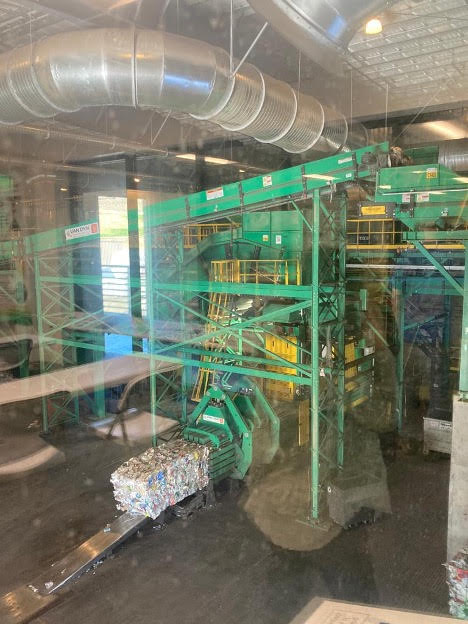
What happens to the recyclables?
Middlemen buy them in big, cube-shaped bales (think bales of hay). The middlemen ensure quality control by randomly dropping by the facility, tearing apart a bale, and weighing all the trash that’s not supposed to be in it. If it’s labeled as cardboard, for instance, there can only be 2.5 percent non-cardboard in the bale.
The middlemen then sell the recyclable paper, cardboard, plastic and steel to buyers in South East Asian countries like Vietnam, Indonesia, and Malaysia. China opted-out four years ago because along with the valuable kinds of trash they were receiving lots of plastic with low recycling potential that polluted the country. Why do South East Asian countries buy our trash: lax environmental laws. Watch groups are trying to ensure that our trash in Asia is handled responsibly. The developing world is the main source of plastic trash in the oceans, particularly Indonesia.
Why Asia?
As we have a trade deficit with Asia, ships arrive to the U.S. full of goods and return to Asia empty. For very little we can fill those ships with recycled garbage. It’s much cheaper than shipping trash within the U.S.
What happens to the trash that is not recyclable?
Back in the bad old days, all trash was landfilled. Decades later we are still dealing with the methane from all the food we buried. By law, methane must be collected and neutralized as it can explode. Pipes have been inserted into what appear to be grass-covered hills that are actually landfills. I was amazed to learn that the methane is vacuumed out through the pipes. Some less affluent or less mindful states simply burn the gas. They have steel wool scrubbers in the chimneys to help clean the smoke, but some of it is still released, contaminating the atmosphere.
Santa Barbara’s $135 million, high tech facility feeds the methane into the electric grid to power 3000 homes. This costs the electric company more than they would pay for oil, gas or coal. Why does the electric company buy it? Because California requires them to use 30 percent renewable energy and it’s going up to 50 percent. Oh, and this facility is powered by the methane as well.
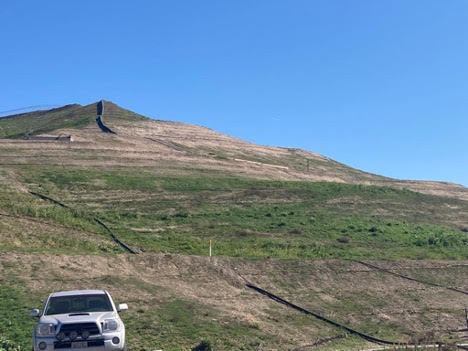
Can landfills just keep piling up?
No. The government permits them to only be so high before new locations have to be found. The goal of each facility is to reduce their landfill waste as much as possible by filtering out recyclables from the trash beforehand and then tamping down what is left to take up as little space as possible to increase the life span of the facility.
What’s surprising about managing a landfill?
Managing a landfill along one of the world’s prettiest coastlines is tricky. Unsurprisingly thousands of seagulls a day visited and then flew to a nearby beach to poop up a storm of contaminants. This of course enraged the locals. The engineers tried flares and fireworks, but the birds were undeterred. Dogs failed. Eagles nested nearby but were too busy with their hatchlings to stop in every day. Then the managers brought out the big guns: Daily, a falconer comes by with his birds. The seagulls have disappeared. It’s not a volunteer job, the falconer apprenticed for seven years with a master, and he can now charge up to $250,000 annually. It’s not just the beachcombers who are happy: The facility workers no longer have to wear hard hats outside, and the trucks aren’t covered with guano.
What happens to the food scraps that have been diverted from the landfills?
In the past eight years, some sections of the landfill have grown 100 feet. Hopefully that rate of growth will decrease drastically, as 45 percent of our garbage is organic and will now be diverted to compost. After the paper, glass, plastic, and metal have been filtered out for recycling, the remainder, mostly food, is fed into the Anaerobic Digester: a large tank, like a shipping container with no oxygen, where bacteria process the food and the methane can’t escape.
When the facility started up, they needed a strong dose of bacteria. For the first batch they used human feces, then they switched to cow dung. Now that they have a mature team of bacteria, as long as food is placed in the digester, the bacteria live on to do their job of making compost. Fun fact: As the bacteria matured, the smell changed from one of manure to one of ammonia, like cat urine.
For nearly two months, each load of organics stew in a hot tank of bacteria. Occasional mixing confirms there are no dry pockets. It sounds pretty low tech, but everyday, onsite employees from the Dutch company that makes the machines, Van Dyk, digitally analyze the waste, confirming it’s being properly processed. If not, they recalibrate by adding more water, bacteria, or heat.
After two months, the material is shaken in giant sieves to sift out stones and small pieces of glass. It’s then moved outdoors to cure in the sun, drying up as much liquid as possible to reduce the size and the smell for easy shipping of the compost.
Some more good news: Unlike most places that landfill tissue, Santa Barbara adds it to the food scraps in the Anaerobic Digester to be made into compost.
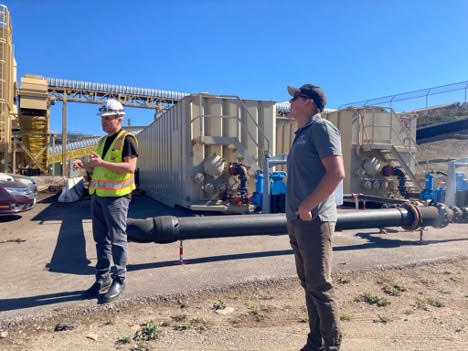
Who uses this compost?
The most popular crops in Santa Barbara are broccoli and strawberries, known as row crops. As small pieces of glass could have gotten past the filters, this compost can’t be used in row crops. But it can be used on the county’s avocado and citrus orchards as well as ranches ravaged by wildfire. Cannabis farms are also eligible for compost from our trash.
What happens to the gases given off by the Anaerobic Digester as it makes compost?
The methane in the tanks is sold to the electric company to power homes. By composting food instead of landfilling it, this facility captures the same amount of methane that would be given off by 22,000 cars. This process of burning the methane for electricity has only two biproducts, oxygen and carbon dioxide, which are a whole lot less damaging to the environment than methane.
What’s the takeaway message?
Sam Dickenson and Carlyle Johnston are the passionate men behind this incredible feat of conservation. No system is without repercussions, they reminded us. The consequences came as a big surprise to me. For instance, they said, substituting paper packaging for plastic seems like a smart alternative, but that too comes with risk: loss of trees and, sadly, paper production has a higher carbon footprint than plastic.
Sam and Carlyle’s message was: Reduce consumption. Recycling should be the last option.
If you’re as hooked on the story of trash as I am, read on for more tasty tidbits:
1. Airports use falconers too.
2. Organic trash from coastal areas with lots of seafood gives off almost as much toxic sulfur as burning oil.
3. This facility has two streams that make methane: the landfill and the composter. Landfill methane is better for making electricity than compost methane.
4. Counties that burn methane, releasing it into the atmosphere instead of making it into electricity, try to reduce the toxicity of the methane, by filtering it through heated water or steel wool or wood chips. The bad molecules stick to the material emitting less methane.
5. Methane testing is done by people walking through the area around the facility. They gauge the methane levels by using testing wands and sticking them into wells. Drones can also test.
6. Landfill trash is layered: 10 feet of trash, 10 feet of dirt. Instead of dirt, Santa Barbara occasionally uses construction waste. Unfortunately, drywall has its own off-gassing problems.
7. Tarps cover open landfill sections at night to keep out the animals. When a landfill section is full (three to four days of trash) it’s covered with dirt that is dynamited off the surrounding hills.
8. Should I wash my recyclables? Yes and no. The only reason to wash them is to keep paper and cardboard clean for recycling, but water damage to paper turns it from a recyclable to a compostable. All other recyclables are melted and will burn off the food. Is it worth using a gallon of water to wash out a peanut butter jar? That’s debatable.
9. Twenty percent of trash that is in the regular bin should have been put in the recycling bin.
10. Cardboard usage increased exponentially during the pandemic.
11. Affluent Santa Barbara has twice the average trash per person than its less wealthy neighbors. Tourism adds a lot of trash too.
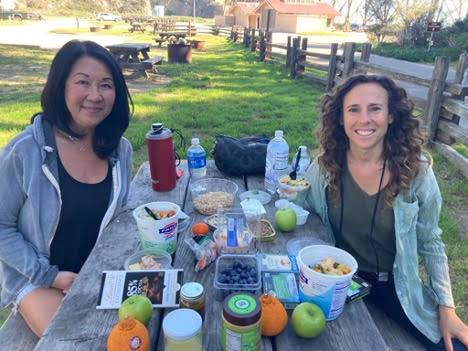




You must be logged in to post a comment.